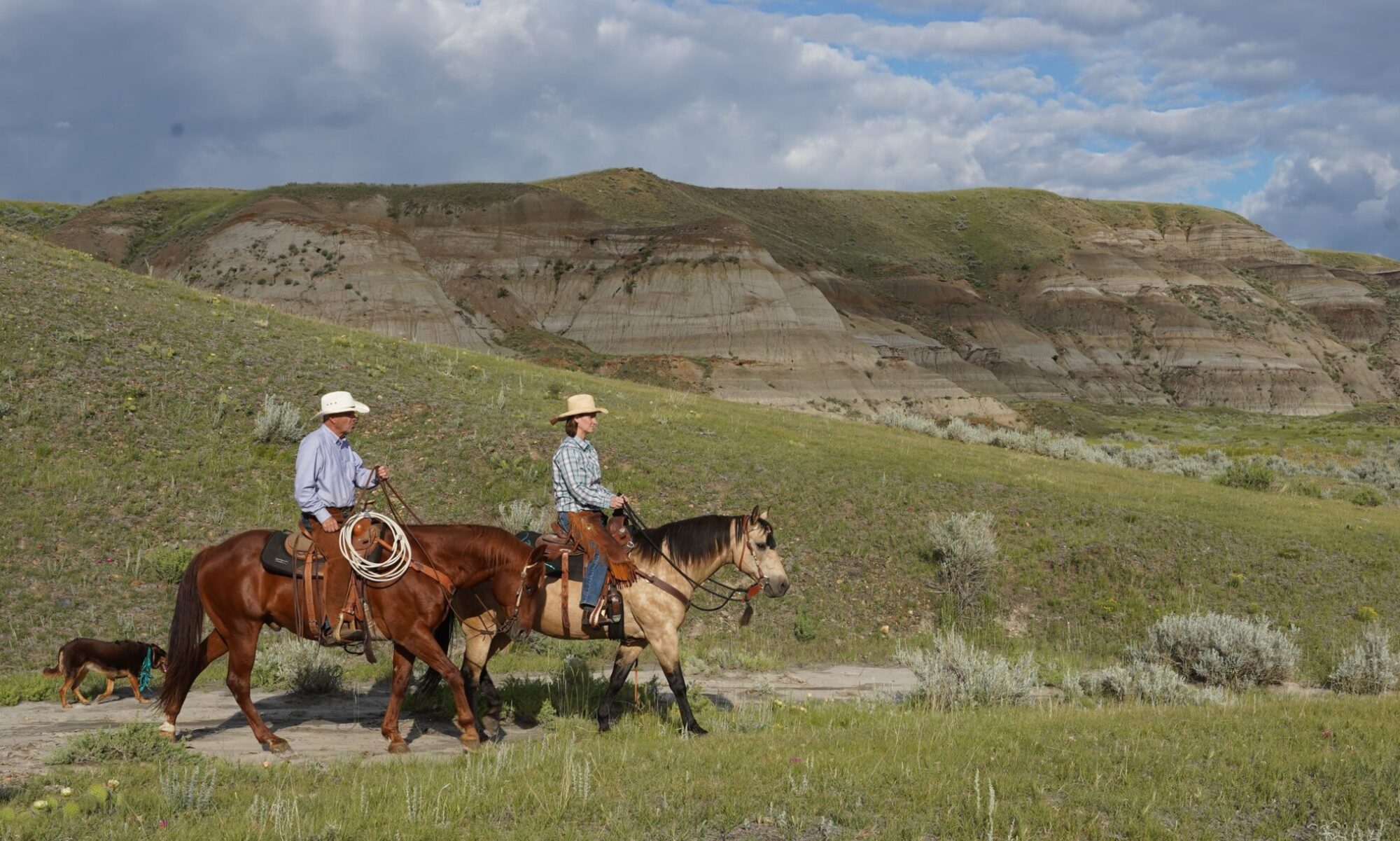This page is a collection of miscellaneous information and stories about horses. If you have something about horses to share, please visit our Contact page.
Spring Conditioning Your Horse
Horse Canada Magazine has a detailed online plan to condition a horse that’s been off work for several weeks or months. It’s important to prevent injuries and resistance due to your horse’s discomfort. Here it is abbreviated:

- Week One – 20 minutes walking. Start off easy!
- Week Two – 20 minutes walking plus 10 minutes trotting. Add trot and one or two strength exercises
- Week Three – 30 minutes walking mixed with 10 minutes trotting and 5 minutes catering or loping.
- Week Four – 40 minutes walking mixed with 15 minutes trotting and 10 minutes cantering or loping
- Week Five – 40 minutes walking mixed with 20 minutes trotting and 10 minutes cantering or loping
Note: gradually increase the time or challenge but not both at the same time. Remember: you can’t go too slowly but you can go too fast!
Click here to read the entire article.
Winter Hoof Issues

Canadian winters present unique challenges which can affect not only traction and hoof quality, but can lead to lameness if left unchecked.
How to deal with and prevent them
What Horses Can Eat

Canada’s Horse Meat Industry, a Contentious Issue
CBC journalist, Wallis Snowdon, wants Canadians to know it’s happening. Read her article and watch the video that examines the raising and the export of live horses for human consumption. There is a push to ban the practice. Bill DeBarres of Medicine Hat opposed the ban of live exports. He is chair of the Horse Welfare Alliance of Canada. Copy and paste into your browser: http://www.cbc.ca/player/play/2274832451618
When to Clip Away so the Horse Can Play
There are several benefits to clipping and blanketing a horse. Read this article to get an expert’s advice on how to do it correctly.
Donkeys and Mules to the Rescue
These lowly beast of burden have been bringing supplies and support to villages in the mountainous regions that cannot be accessed otherwise.
How to Build Your Horse’s Confidence
See this “Horse Canada” post. It gives systematic training steps to help your horse become comfortable about unfamiliar objects, sounds and situations.
How to Canter Western

Click on the link below that describes how in 4 steps. It also contrasts it Western with English riding. https://animals.mom.com/train-horse-carry-flag-4347.html
Common Causes of Lameness in Horses

There are a variety of of conditions that affect a horse’s gait.
Click here to see the four common causes of lameness and treatment options for each.
Horses in Hot Weather

Horses can suffer from the heat too. Be sure to provide:
- access to water
- shade
- ventilation, if stabled
How to Avoid Sunburn:
- protect any pink areas, particularly around head and heel areas
- use sun cream, horse specific or children’s sunblock
- test a small area first in case horse is allergic
- full face mask
How to Treat Sunburn:
- cool area with water
- apply specialist cream to soothe and hydrate
- call vet immediately if crusty or is weeping fluid
Signs of Overheating Are:
- more lethargic
- breathing heavily
- appear dull
- increased heart rate.
Signs of Heatstroke (which can be fatal) Are:
- excessive sweating
- heavy, rapid breathing
- elevated heart and respiratory rate
- altered behaviour (dull/listless to panicky)
If Horse is Overheating:
- quickly douse with cold water
- have water remain on body to evaporate
- keep horse moving
- call a vet
Making Ice Blocks to Cool Your Equine Friends

Ice blocks made from fruit and vegetables in water provide a healthy treat and a fun way to cool down. Recipe:
- 2 litre ice cream pail
- add chopped apples, carrots, etc.
- fill pail with water
- freeze
- serve
Learn more: Link
Horses in Electrical Storms

- if you stable, be sure it is well grounded (and has lightning rods)
- risk of lightning strike is greater if they shelter under a large tree, especially if they are in herds
- wire fences and rain (sodden ground) are good electrical conductors, heightened for horses wearing steel shoes
Excellent Article About Trail Riding

Horse Lets Herself into the House Whenever She Wants
Ideal Feeding Frequency for Horses

In their natural setting horses spend most of their time eating. When kept in stables, horses are most commonly fed two meals a day. But the more frequently they receive forage, the more similar to their environment it becomes. Ideally they are fed forage at no more than six-hour intervals.
Further info on this link.
Does Your Horse Enjoy His Job?

There are obvious signs such as pricked ears and a happy, keen expression on their face. It’s easy to tell if a horse is nappy, irritated or otherwise having an unpleasant experience: pinned ears, swishing tail, lack of impulsion. Click on the link to see what else you should be looking for.
Healthy Hooves

Hoof health depends on good farrier care and a healthy environment e.g. not a wet and muddy paddock.
A balanced diet is important:
- good quality forage (pasture and/or hay)
- as needed concentrate to provide additional calories (energy)
- any protein, vitamins & minerals lacking in the hay
Click on this link for other supplements that may improve hoof quality.
Grooming Your Horse

Click this link to have a professional groomer give the pros and cons of:
- Mane pulling
- Mane pulling alternatives
- Roaching the mane
- Cutting a bridle path
- Removing ear hair
- Trimming muzzle whiskers
- Trimming fetlock hair
- Banging the tail
For each she gives instructions how to do it and includes tips to help you. she also discusses how to remove #$%* burrs.
The Old Horse That Keeps on Giving

Read this heart-warming horse story.
